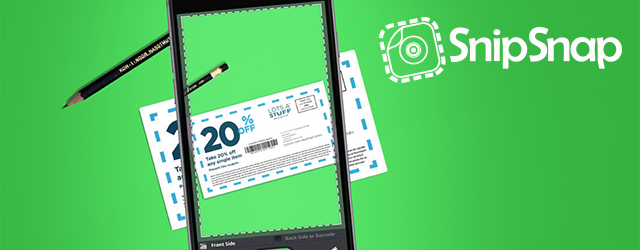How Startup SnipSnap Used Slack To Prototype Its App's Coolest Feature
Mobile coupon app SnipSnap recently launched Scout, a virtual savings concierge. Here’s how they put Slack to work in unexpected ways.
If your team uses Slack, you’ve likely seen the ways that the beloved chat app can change office communication. A growing toolbox of bots and third-party integrations have made Slack even more useful than most people expected. But here’s a use case you might not have seen yet: Prototyping an app’s new feature.
The team at mobile coupon startup SnipSnap did exactly that. Last week, the company launched Scout, a savings concierge powered by what they call “human-mediated artificial intelligence.” Take a photo of any product in a store, and Scout will recognize it and look for price match deals, coupons, and other discounts. Using a chatlike interface, Scout will deliver links to savings opportunities and converse with the user in real time.

“Nearly every retailer supports price matching, but only 5% of consumers actually do it,” says Ted Mann, founder and CEO of SnipSnap, which was acquired by visual search company Slyce earlier this year. “Price matching is super hard if you have to read all the legalese, check dozens of websites, and print out/save webpages to show in store. We basically eliminate all that work and give the consumer confidence to price match.”
Scout will also scour SnipSnap’s own database of millions of user-uploaded coupons, as well as other coupon sites and online savings sources. But the biggest challenge of all, Mann says, was building the price-matching feature.
“This was perhaps the trickiest to engineer, as the price-match policies are rather complex, and needed a sophisticated rules engine,” says Mann.
Each source of savings data, including the price-match information, requires its own separate database, Mann explains. The image-based search is powered by Slyce’s image recognition technology, while the chat component is built on Firebase.
To the user, the end result feels like a one-on-one chat with an expert penny pincher. By focusing on savings, Scout forgoes many of the complexities of building an open-ended artificial intelligence system like Siri or Google Now. And if a query seems like it might be too nuanced for the machines to handle alone, there are live people waiting to help out.
To test the feature out, the team knew they’d need something reliable to mimic the chat functionality.
“Before we knew this idea had legs, we wanted to MVP it with something approaching a true mobile messaging experience,” says Mann. “So we needed a client to listen for Firebase responses, so rather than building one at first, we just set up Slack to listen for the Firebase engagements.”
After a SnipSnap intern plugged Firebase into an open-source messaging interface, team members testing the user-facing chat functionality had something they could use in the field. On the other end, SnipSnap staffers fielded savings queries within Slack. Once the prototype was rigged up, a few staffers went on a retreat in Dover, Delaware, to hunt for some sick deals.
“During that period, we saved money on nearly every trip, and derisked a ton of the assumptions around the product,” says Mann.
The team has since built their own backend concierge client, but they still use Slack to monitor engagements. Like a growing number of startups, SnipSnap finds itself using Slack for more and more these days.
“We use Slack as the central nervous system of our company communication,” says Mann. “Everything from Github commits to app store reviews to customer support requests all come through Slack.”





